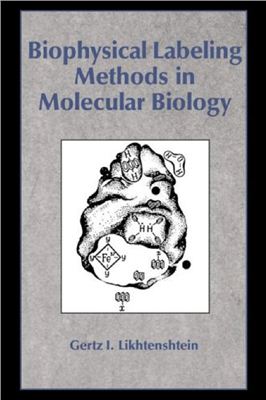Cambridge University Press, 2005, Pages: 305
This monograph describes the theoretical bases and experimental prerequisites for methods such as spin fluorescence, triplet, M?ssbauer, photochromic and electron-density labeling, including the procedures used to obtain specifically modified proteins, enzymes, biomembranes, nucleic acids, and other biological molecules. The fundamentals of the physical theory behind each technique is explained and details are given of how to interpret the experimental data obtained. Special sections deal with critical reviews of recent data on the structure, molecular dynamics and conformational transitions of biological molecules. Each section concludes with a discussion of the results obtained from these techniques in connection with various problems of enzyme catalysis, electron transfer, molecular biophysics and molecular biology. The uses that labeling techniques can be put to for the investigation of whole cells and tissues are also discussed.
Physical labels such as stable nitroxide radicals, luminescent and photochromic chromophores, so-called Mossbauer atoms, and electrondense assemblies of heavy atoms have proved to be effective tools in solving many problems at the molecular level in biological systems. These physical labels are used as "molecular rulers" to measure the distances between chosen groups and to measure the size, form, and microrelief of objects. By providing information about these factors, the label provides information that can help the scientist to understand the structures of membranes, nucleic acids, enzymes, and proteins and how they function.
This volume covers all aspects of this field: the theoretical bases, the experimental techniques, and how to interpret the resulting data. It also critically discusses some recent results obtained with these techniques and gives an analysis of likely developments in the future.
This monograph describes the theoretical bases and experimental prerequisites for methods such as spin fluorescence, triplet, M?ssbauer, photochromic and electron-density labeling, including the procedures used to obtain specifically modified proteins, enzymes, biomembranes, nucleic acids, and other biological molecules. The fundamentals of the physical theory behind each technique is explained and details are given of how to interpret the experimental data obtained. Special sections deal with critical reviews of recent data on the structure, molecular dynamics and conformational transitions of biological molecules. Each section concludes with a discussion of the results obtained from these techniques in connection with various problems of enzyme catalysis, electron transfer, molecular biophysics and molecular biology. The uses that labeling techniques can be put to for the investigation of whole cells and tissues are also discussed.
Physical labels such as stable nitroxide radicals, luminescent and photochromic chromophores, so-called Mossbauer atoms, and electrondense assemblies of heavy atoms have proved to be effective tools in solving many problems at the molecular level in biological systems. These physical labels are used as "molecular rulers" to measure the distances between chosen groups and to measure the size, form, and microrelief of objects. By providing information about these factors, the label provides information that can help the scientist to understand the structures of membranes, nucleic acids, enzymes, and proteins and how they function.
This volume covers all aspects of this field: the theoretical bases, the experimental techniques, and how to interpret the resulting data. It also critically discusses some recent results obtained with these techniques and gives an analysis of likely developments in the future.

